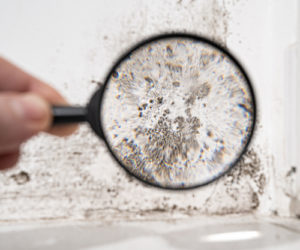Your Ultimate Guide to Post Mold Remediation Methods
In the aftermath of mold and mildew problem, understanding exactly how to successfully eradicate the mold and mildew and avoid its reoccurrence is critical for keeping a healthy and balanced interior atmosphere. From selecting the appropriate cleaning and disinfecting techniques to executing methods for long-lasting mold avoidance, each step in the removal journey plays an important duty in guaranteeing a successful outcome.
Understanding Post-Mold Remediation Process
After finishing the mold removal process, it is crucial to recognize the post-mold remediation methods that are needed to ensure a reliable and complete cleaning. When the mold and mildew has been removed, the next step entails cleansing and sanitizing the influenced areas to protect against any type of regrowth of mold and mildew.
Additionally, performing a final assessment post-remediation is important to ensure that all mold and mildew has actually been successfully gotten rid of. This assessment must entail a comprehensive aesthetic check along with potentially air sampling to confirm the absence of mold spores in the air. If the inspection exposes any type of lingering mold, additional removal might be essential. Finally, enlightening residents on safety nets such as controlling wetness degrees and without delay attending to any type of water leakages can assist preserve a mold-free environment.
Efficient Cleaning and Disinfecting Approaches

Avoiding Future Mold Development

Importance of Appropriate Air Flow
Proper air flow plays a critical function in preventing dampness buildup, a key aspect in mold development within interior environments. Reliable ventilation systems aid get rid of excess humidity from the air, reducing the chances of mold spores locating the moisture they require to spread out and germinate. Without ample ventilation, indoor spaces can become a breeding ground for mold and mildew, resulting in possible health and wellness threats and architectural damage.
By making certain proper air circulation, ventilation systems can additionally assist in drying damp locations quicker after water damages or flooding events, even more deterring mold and mildew growth. testing air quality after mold remediation. In rooms like washrooms, basements, kitchens, and attic rooms where moisture degrees tend to be greater, mounting and keeping reliable air flow systems is essential in preventing mold invasions

Surveillance and Upkeep Tips
Offered the essential role that correct ventilation plays in protecting against mold and mildew growth, it is imperative to establish effective monitoring and upkeep tips to Bonuses make sure the continued functionality of air flow systems. Surveillance humidity degrees within the residential property is likewise essential, as high humidity can contribute to mold and mildew growth. By staying alert and proactive to the condition of ventilation systems, property owners can successfully minimize the danger of mold and mildew regrowth and keep a healthy and balanced indoor environment.
Final Thought
In conclusion, post-mold removal strategies are important for ensuring a clean and safe environment. Comprehending the process, implementing efficient cleansing and decontaminating methods, avoiding future mold development, preserving correct air flow, and normal tracking are all critical action in the removal procedure. By following these standards, you can effectively eliminate mold and prevent its return, working or advertising a healthy living room for all passengers.
In the results of mold problem, understanding just how to properly eradicate the mold and navigate to these guys prevent its reoccurrence is paramount for maintaining a healthy indoor environment. When the mold has been removed, the following step includes cleansing and disinfecting the influenced locations to prevent any regrowth of mold - testing air quality after mold remediation. After getting rid of noticeable mold and mildew development, it is critical to cleanse all surfaces in the damaged area to get rid of any remaining mold spores. To better improve mold prevention procedures, it is essential to attend to underlying problems that originally led to mold and mildew growth.Offered the vital role that appropriate air flow plays in preventing mold growth, it is crucial to develop reliable surveillance and maintenance pointers to make certain the continued capability of air flow systems